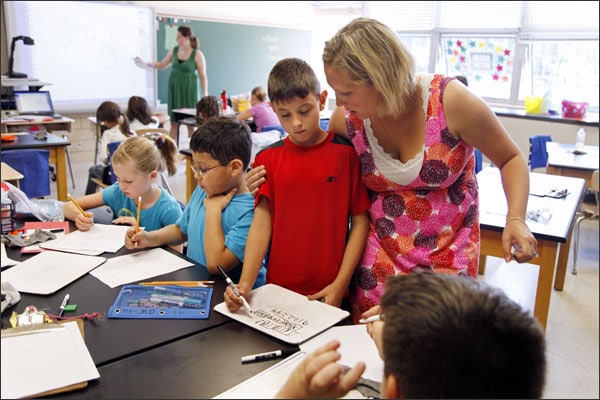 Research indicates that student achievement increases when students feel comfortable in their learning environment. A caring classroom is not only comfortable, allows the teacher to spend more time teaching and less time handling student conflicts. Listed below are twelve practical, do-able ways to foster a positive learning environment so that your students’ focus will be on learning.
Research indicates that student achievement increases when students feel comfortable in their learning environment. A caring classroom is not only comfortable, allows the teacher to spend more time teaching and less time handling student conflicts. Listed below are twelve practical, do-able ways to foster a positive learning environment so that your students’ focus will be on learning.
1. Address name-calling. Ignoring name-calling reinforces that it is expected and OK.
2. Teach students the vocabulary for their emotions. Label emotions as youth share concerns so they have words for what they feel.
3. Help students to focus on their own behavior, emotions, and conflicts rather than the behavior of others by encouraging them to tell their story using the word “I” rather than “he, she, and you” etc. Teach them to use “I Statements”.
4. Hold class meetings and use the time to teach social skills, conflict resolution skills, and reinforce empathy. The investment will minimize time wasted on discipline.
5. If a conflict occurs in the class, when possible, role-play other positive alternatives.
6. Use authoritative discipline which involves youth in establishing meaningful rules and consequences. Be consistent in the application and enforcement of class rules, especially in regard to bullying, so students feel secure in their environment.
7. Quietly ‘notice’ when young people are caring towards one another. For example, say, “I noticed that you helped Jane with her math.” Or, say, “I noticed that you included Johnny on your team. That was kind.”
8. Require restitution. Rather than requiring an apology, when a student hurts another accidentally or intentionally, assist the student who did the hurting to figure out a way to make up for what happened. They might offer a kind word, help with an assignment, or include the student in an activity, etc.
9. Take the time to discuss with youth, at a level they can understand, the effect of violent TV shows and video games. Help young people to understand that on TV a person can get kicked ten times and get up, but in real life getting kicked hurts.
10. Use the arts as a teaching tool. Use music to teach concepts of peace, cooperation, and sharing. Use puppets to act out conflict situations, and then draw from the children how the puppets can resolve problems peacefully. Have teens create skits for small children.
11. Use issues, events and concepts from social studies, science and literature as catalysts for discussion of conflict and an impetus to discuss positive ways to handle emotions and manage conflict.
12. Validate children’s feelings. When they “tattle” about a hurt, a teacher might say, “That must feel terrible. I understand how you feel.” Often, that’s all children need to hear. Help children to find solutions to the problem that are positive and empowering. Teach children how not to be victims.


